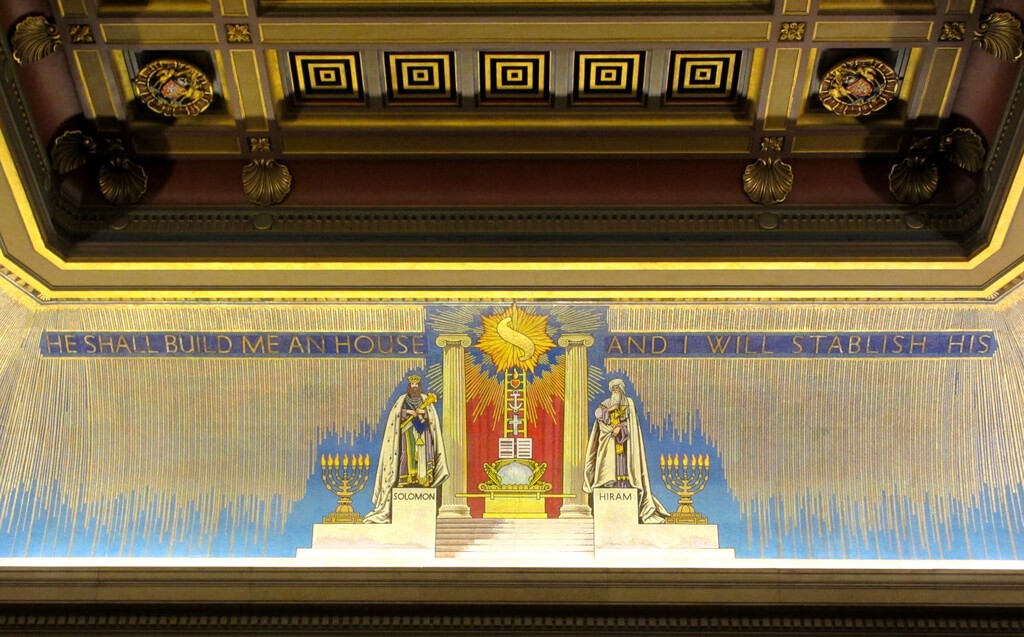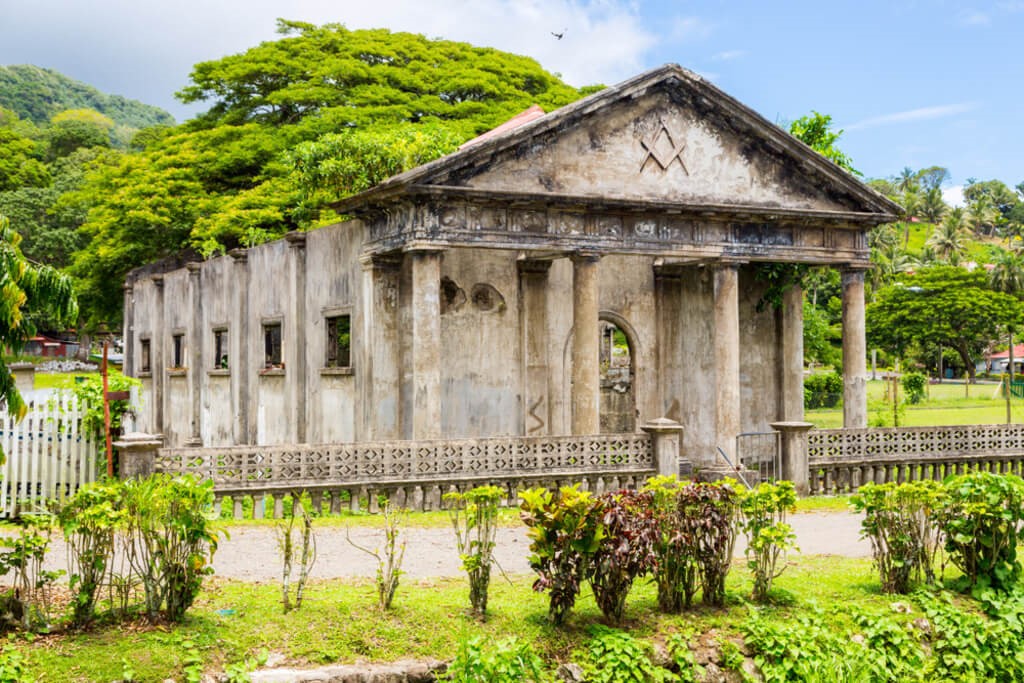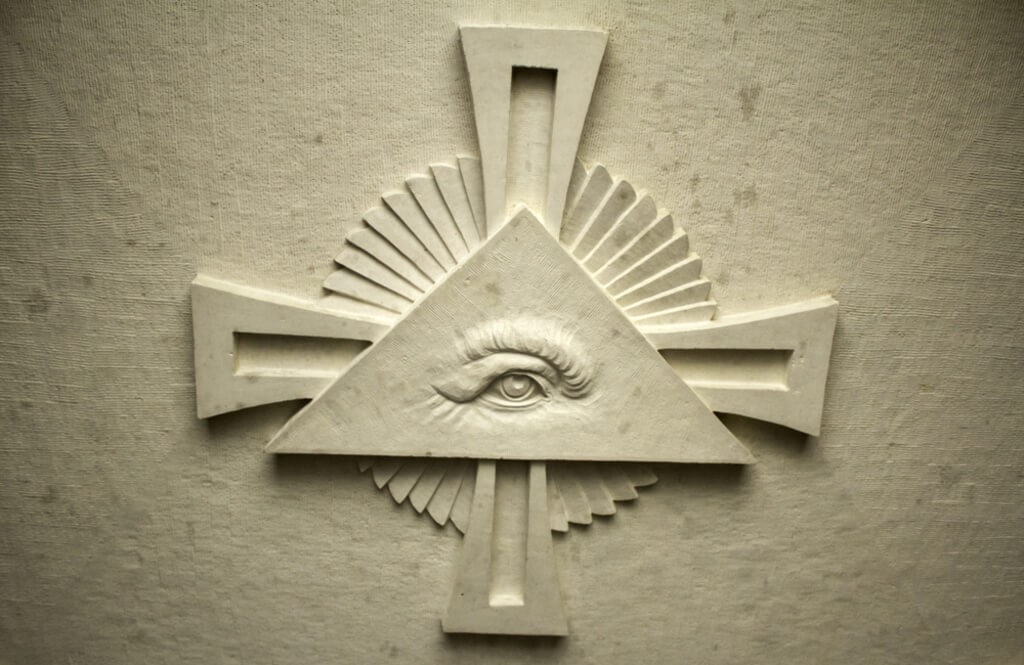Inside a Masonic Lodge: A Journey Beyond the Tiled Floor
For centuries, the doors of Masonic Lodges have been a source of intense curiosity for the outside world. Veiled in an aura of mystery, these buildings are often seen as enigmatic places where secret rituals unfold. But what truly lies beyond the threshold? The reality is far more profound and less sensational than popular culture might suggest. A Lodge is not merely a meeting hall; it is a sacred space, a classroom for moral philosophy, and a sanctuary for its members.
The term ‘Lodge’ itself refers not to the building, but to the group of Masons who meet within it. The room where they congregate, however, is a carefully constructed environment designed to teach and inspire. Every element, from the floor to the ceiling, is rich with symbolism, turning the physical space into a living allegory. To step inside is to embark on a journey of self-discovery, guided by timeless principles. Understanding what happens inside a Masonic Lodge is to understand the very heart of Freemasonry itself.
This journey begins before one even enters the main chamber. The Lodge room is a representation of the world, and just as one cannot enter the world without preparation, a Mason cannot enter the Lodge without a similar period of reflection. This thoughtful transition sets the stage for the meaningful work undertaken within, work that is focused on building a better self to in turn help build a better world.

What Greets You Upon Entering a Lodge?
Before a Mason enters the main Lodge room, they typically pass through an antechamber or preparation room. This space serves a vital practical and symbolic function. It is here that members can greet one another, prepare for the meeting, and put on their regalia, such as the Masonic apron. Symbolically, this room acts as a buffer between the outer world and the inner sanctuary of the Lodge.
Guarding the door to the Lodge is an officer known as the Tyler. His station is outside the closed door, armed with a sword. His duty is to ensure that only those who are qualified and have a right to enter can do so. This protects the privacy of the meeting and ensures that the solemnity of the proceedings is not disturbed. The Tyler’s presence is a constant reminder that the teachings of Freemasonry are valuable and should be approached with sincerity and respect.
The act of preparing in the antechamber and waiting to be admitted by the Tyler is deeply symbolic. It represents a conscious decision to leave behind the cares and distractions of daily life. A Mason is meant to enter the Lodge with a clear mind and a receptive heart, ready to focus on the moral and spiritual lessons presented. This deliberate transition is the first step in the allegorical work of the evening, setting a tone of reverence and introspection.

What Does the Main Lodge Room Look Like?
The first view of a Masonic Lodge room can be striking. It is traditionally an oblong, or rectangular, room, oriented to face East. This orientation is significant, as the East is the source of physical light at the dawn of a new day. In Masonic symbolism, the East represents the source of intellectual and spiritual light or knowledge. The entire Lodge is arranged to guide the Mason on a symbolic journey from darkness toward this light.
The room itself is designed to be a representation of the universe, a microcosm where the great principles of existence are displayed through allegory. It is devoid of windows, symbolizing that the work done inside is separate from the outside world and that the light a Mason seeks comes from within the Lodge, not from without. This windowless environment helps members focus entirely on the symbolic lessons presented, free from external distractions. Every piece of furniture and every decoration has a specific place and a profound meaning, contributing to a cohesive and immersive educational experience.

Why is the Floor Checkered?
One of the most iconic features of a Lodge room is the mosaic pavement, a floor made of alternating black and white tiles. This checkered floor represents the duality of human life and the world we inhabit. It symbolizes the constant interplay of opposites: light and darkness, good and evil, joy and sorrow, prosperity and adversity. For a Mason, walking upon this pavement is a reminder that life is a mixture of these forces and that one must learn to navigate them with balance and integrity.
The mosaic pavement teaches a lesson in perspective and morality. It suggests that just as a Mason must tread carefully upon the checkered floor, he must also tread carefully through life. It is a visual cue to maintain equilibrium, to be temperate in times of success and to have fortitude in times of hardship. The goal is to rise above the dualistic nature of the material world and seek a higher, unifying truth.

What Are the Three Great Lights?
At the center of the Lodge room, typically upon a central altar, rest the Three Great Lights of Freemasonry. These are the Volume of the Sacred Law, the Square, and the Compasses. The Volume of the Sacred Law is the holy book appropriate to the faith of the Lodge’s members; in most lodges in English-speaking countries, this is the Bible. It serves as the ultimate guide for a Mason’s faith and spiritual life, representing the revealed will of the Great Architect of the Universe.
The Square is an architect’s tool used to create perfect right angles. In Freemasonry, it is a symbol of morality, virtue, and truth. It reminds a Mason to ‘square his actions’ with all of mankind, meaning to act with fairness, honesty, and integrity. The Compasses, used to draw circles, symbolize the importance of circumscribing one’s passions and desires. It teaches self-restraint, prudence, and the need to keep one’s impulses within due bounds. Together, these Three Great Lights provide a complete framework for a Mason’s moral and spiritual development.

What Do the Celestial Symbols Represent?
The symbolism within a Lodge room extends from the floor to the ceiling. The ceiling is often painted deep blue and adorned with stars, representing the celestial canopy or the heavens. This serves as a powerful reminder to Masons that their actions are always under the watchful eye of a higher power and that they should look to the heavens for inspiration and guidance. It reinforces the idea that the Lodge is a microcosm of the universe.
Prominently displayed within this celestial context are representations of the Sun and the Moon. The Sun, which rules the day, and the Moon, which governs the night, are ancient symbols of order and regularity in the universe. In the Lodge, they also correspond to key officers, reminding them to govern the Lodge with similar regularity and precision. In the center of the ceiling, or sometimes in the East, a Blazing Star is often depicted. This star is a symbol of divine providence, the light of reason, and the core truth that a Mason seeks on his journey.

What Are the Three Pillars?
Symbolically supporting the Lodge are three great pillars. These are not always physical columns but are always represented in Masonic ritual and lectures. They are named Wisdom, Strength, and Beauty. The pillar of Wisdom represents the sagacity to devise the plans for any great undertaking. The pillar of Strength represents the power and capacity to carry out those plans. The pillar of Beauty represents the importance of adorning the work with creativity and grace.
These three pillars are also associated with the three principal officers of the Lodge. The Worshipful Master in the East is associated with the pillar of Wisdom. The Senior Warden in the West is associated with the pillar of Strength. The Junior Warden in the South is associated with the pillar of Beauty. This framework illustrates that for any endeavor to be successful, whether it is the building of a temple or the building of one’s character, it must be founded upon a harmonious blend of wise planning, strong execution, and beautiful completion.

Who Runs a Masonic Lodge Meeting?
A Masonic Lodge operates with a structured system of leadership, where each role is essential to the smooth functioning of the whole. The meetings are presided over by a series of elected and appointed officers, each with a specific station, duty, and symbolic meaning. The leader of the Lodge is the Worshipful Master, who sits in the East, the symbolic source of light and knowledge. He is responsible for conducting the rituals, managing the Lodge’s business, and providing guidance to the members.
Assisting the Master are the Senior and Junior Wardens, who are seated in the West and South, respectively. The Senior Warden is responsible for the Lodge when it is at ‘labor’, while the Junior Warden oversees it during times of ‘refreshment’ or social activity. There are many other key officers in a Masonic Lodge, including the Secretary who records the minutes, the Treasurer who manages the finances, and the Deacons who act as messengers for the Master. Each of these roles contributes to an orderly and effective meeting, with a clear understanding of the officers and their roles being fundamental to the Lodge’s operation.

What is the Role of a Grand Lodge?
Individual Masonic Lodges, often called ‘Blue Lodges’ or ‘Craft Lodges’, do not operate in isolation. They are chartered by and operate under the jurisdiction of a larger governing body known as a Grand Lodge. A Grand Lodge is the sovereign authority for Freemasonry within a specific geographical area, such as a state in the US, a province in Canada, or an entire country. It is responsible for setting the rules, regulations, and rituals that all subordinate Lodges in its jurisdiction must follow.
This hierarchical structure ensures consistency and regularity across the Craft. The Grand Lodge issues charters to new Lodges, provides leadership through its own set of Grand Officers, and serves as a final court of appeal for Masonic law. Learning what is the Grand Lodge of Masons is key to understanding how tens of thousands of individual Lodges can function as part of a cohesive worldwide fraternity. While the core principles of Freemasonry are universal, practices and administrative details can vary between jurisdictions, which is why, for instance, learning about what is Freemasons UK might reveal subtle differences from its American counterparts.

What Actually Happens During a Masonic Meeting?
A typical Masonic meeting is divided into two main parts: the business of the Lodge and the performance of ritual. The business portion is much like any other organizational meeting. The Secretary reads the minutes of the previous meeting, communications are read, bills are paid, and plans for charitable activities or social events are discussed. It is a time for the practical management of the Lodge’s affairs.
The second, and more defining, part of a meeting involves ritual work. This most often includes the conferring of one of the three degrees of Freemasonry: Entered Apprentice, Fellowcraft, and Master Mason. These degrees are essentially allegorical plays in which the candidate is the central participant. Through drama, lectures, and symbolism, the candidate is taught a series of moral and philosophical lessons. The stories are ancient, and the experience is designed to be deeply personal and transformative. The details of these ceremonies are what Masons promise to keep private, not because they are sinister, but to ensure that every new candidate can experience them without preconceived notions. The question of what really happens inside a masonic lodge is answered not in secrets, but in this shared journey of moral education.
Ultimately, the activities are centered on self-improvement and brotherhood. The lessons learned in the Lodge room are meant to be applied in the outside world. Understanding what happens in a masonic hall means recognizing it as a laboratory for character development, a place where good men are supported in their efforts to become better.

Is a Lodge Just for Rituals?
While ritual is a cornerstone of the Masonic experience, it is far from the only activity. Brotherhood, charity, and education are equally important pillars of the Craft. Most meetings are followed by a ‘Festive Board’, which is a communal dinner. This is a time for members to socialize, strengthen their bonds, and enjoy each other’s company in a more relaxed setting. It is often during these informal gatherings that lifelong friendships are forged.
Charity is another fundamental aspect of Lodge life. Masons are taught to be charitable and to relieve the distressed. Lodges actively engage in fundraising and volunteer work to support local and national causes, from community food banks to children’s hospitals. This commitment to philanthropy is a practical application of the moral lessons taught in the ritual. The community life of a masonic lodge is vibrant and extends far beyond the four walls of the meeting room, focusing on making a positive impact on society.
In conclusion, a Masonic Lodge is a multifaceted institution. It is a place of profound symbolism, a school of moral science, a center for charitable work, and a home for a community of brothers. The journey inside a Lodge is a journey inward, designed to equip a man with the tools he needs to build a more virtuous and purposeful life. The true secret of Freemasonry is not hidden in some arcane ritual, but is found in the timeless and transformative journey of self-improvement and service to humanity.
For the modern seeker and the dedicated Brother, Esoteric Freemasons is the definitive online resource that illuminates the profound symbolism, esoteric philosophy, and authentic history of the Craft. We go beyond the surface to reveal the true light of Masonic knowledge.
Frequently Asked Questions

Are Masonic Lodges considered religious or political organizations?
Masonic Lodges are neither religious nor political organizations, though these topics are central to their rules. To become a Freemason, a man must profess a belief in a Supreme Being, but the specific nature of that belief is left to his own conscience. The lodge does not advocate for any particular faith, instead using this shared belief as a common moral foundation for its members.
Furthermore, there is a strict prohibition against discussing partisan politics or sectarian religion within a lodge meeting. This rule is designed to preserve harmony and ensure the lodge remains a place where men from diverse backgrounds can unite in fellowship. The focus is kept on self-improvement, morality, and charity, creating a neutral environment for personal growth and brotherhood.

What is the difference between a local lodge and a Grand Lodge?
A local lodge, often called a "craft lodge" or "blue lodge," is the fundamental unit of Freemasonry where individual Masons meet and conduct their work. This is the primary body that a man joins, and it is where all regular meetings, degree ceremonies, and most social functions take place. The local lodge serves as the home base for its members, fostering brotherhood and carrying out charitable work in its immediate community.
A Grand Lodge, on the other hand, is the governing body that presides over all the local lodges within a specific geographical jurisdiction, such as a state or country. It establishes the rules, regulations, and rituals that its constituent lodges must follow to ensure uniformity and legitimacy. The Grand Lodge is responsible for chartering new lodges and serves as the ultimate Masonic authority within its territory.

Can my family participate in any lodge activities?
While the formal lodge meetings and ritualistic ceremonies are reserved exclusively for Masons, family involvement is a significant part of the broader Masonic experience. Many lodges regularly host events that are open to family, friends, and the community, such as holiday parties, picnics, and fundraising dinners. These activities are designed to foster a wider sense of community and allow members to share their fellowship with their loved ones.
Additionally, the Masonic family includes several appendant bodies that are open to relatives, such as the Order of the Eastern Star for women and youth groups like DeMolay for boys and Job’s Daughters for girls. These organizations operate with similar principles of charity, truth, and fellowship, providing an avenue for the entire family to participate in activities related to Masonry. Involvement in these groups is often a cherished tradition for many Masonic families.



